After three days of travel, upon arriving in Madagascar, there is only one leg of the trip left before reaching Centre ValBio, Seneca Park Zoo’s partner of three decades. Centre ValBio is situated in Ranomafana National Park, a biodiversity hotspot, and home to countless creatures, including some of Madagascar’s most famous residents, lemurs.
“I like to move it, move it,” friends and family sing to us before we leave—a reference to the singing lemur in the animated Madagascar movie. We are asked to take pictures, and to bring some home in our suitcases.
We are on our way to the land of lemurs. Lemurs are found only here in Madagascar, this very large island hundreds of miles off the coast of Africa, and one of the most unique and biodiverse ecosystems in the world. When conservationists talk about species that are particularly popular, and are considered cute or cuddly, or otherwise draw our collective attention, they call these species “charismatic.” By this definition, lemurs are some of the most charismatic creatures on the planet. They are also some of the most critically endangered, with over 95% of lemur species threatened with extinction in the next 20 years.
We are hoping to see some lemurs, of course, but we are really here to meet the people who are working to protect them and the land they call home.
But before we arrive there is the 12-hour drive, on roads with potholes the size of vehicles. It used to be nine hours, our Malagasy driver and guide David explains to us, but it is much longer now because the roads are so bad; they haven’t been repaired in years. Madagascar is one of the poorest countries in the world. Minimum wage is $55 per month, David tells us, yet many people don’t even make that.
As we drive away from the city and into the rural areas, the poverty becomes clear. Children and adults wait at the roadsides for the opportunity to sell something to passing cars. Clothes are torn, feet are bare.
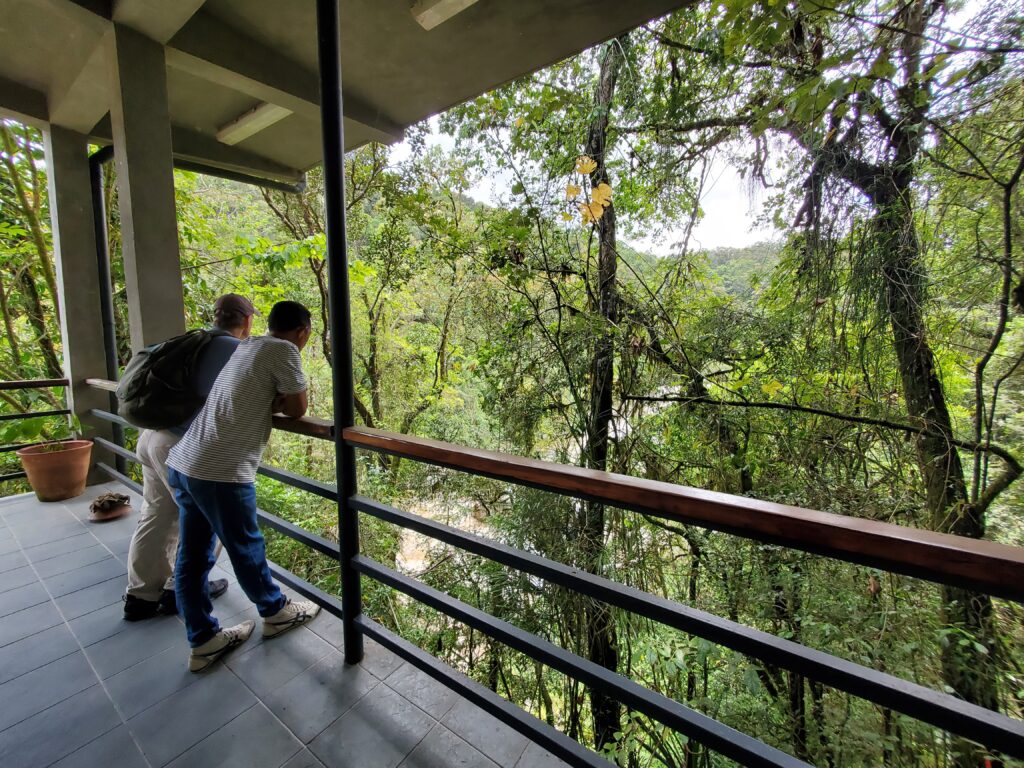
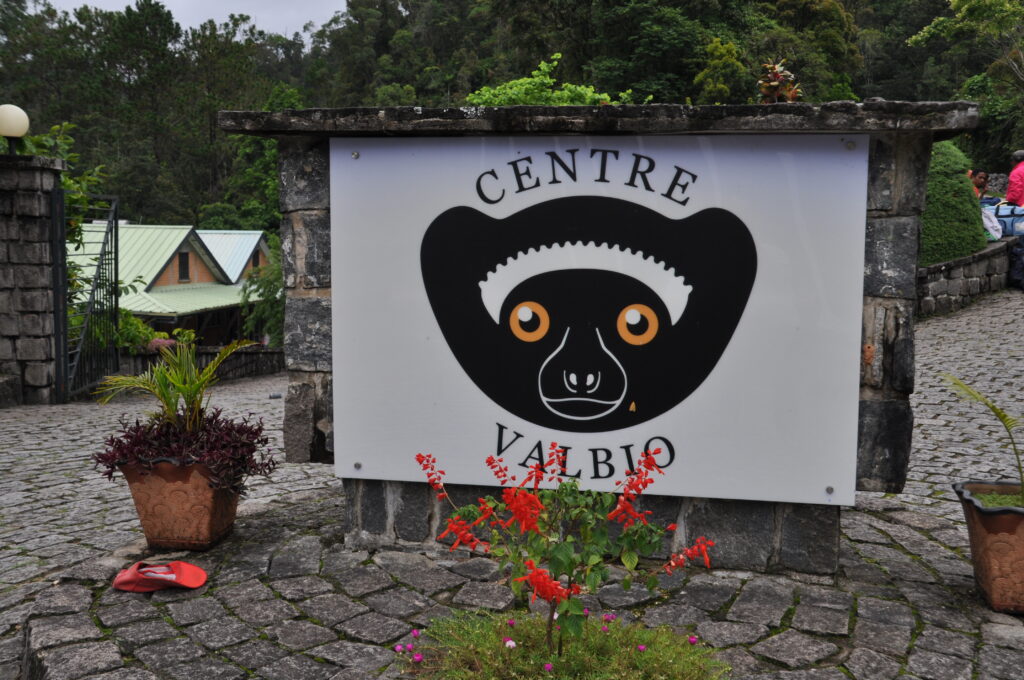

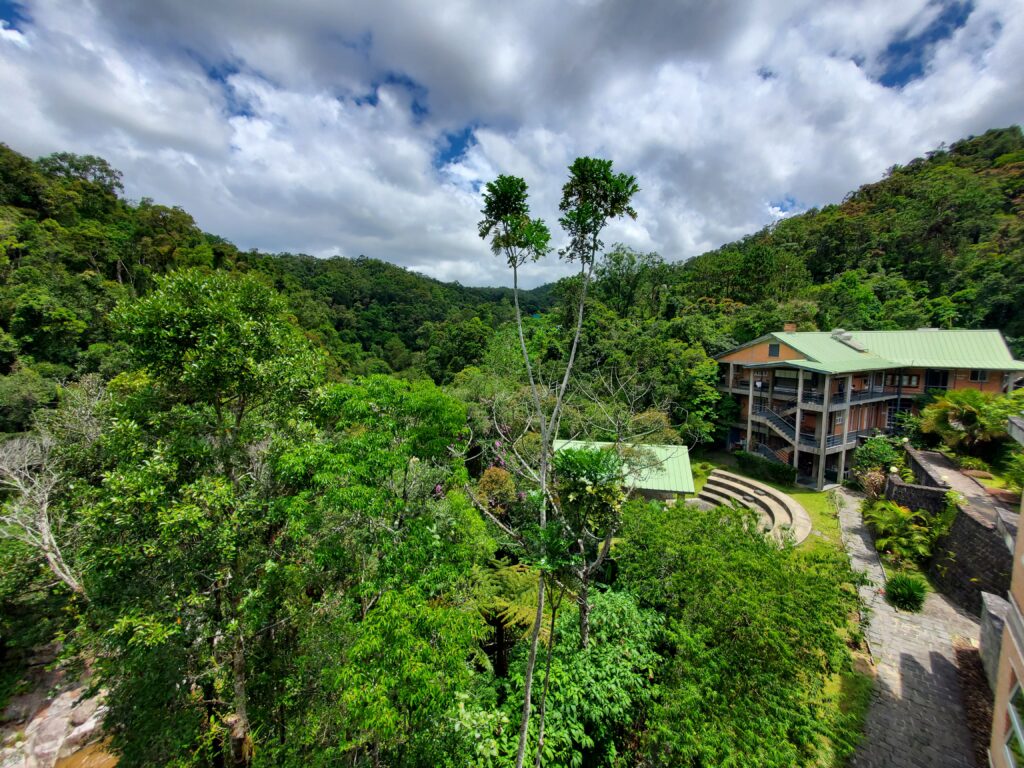

Much of the landscape is bare, too. Trees have been cut or burned down, and hillsides have been torn into or terraced, leaving the soil to seep or wash away, where it runs into rivers, and eventually out to sea. The water in rivers and rice paddies looks like chocolate milk.
Madagascar has lost nearly half of its forests over the past 60 years, much of it through clear cutting, and slash and burn methods to use ash for fertilizers. The soil is red here, and erosion is so bad that satellite photos show Madagascar “bleeding” into the ocean.
As the trip goes on, the day turns cloudy, then rainy and dark, and poverty reveals itself at the roadsides, it is hard not to feel a sense of hopelessness, even despair.
We arrive in the dark. As we get closer to our destination, the roads start to improve, but it takes us awhile to notice; it’s funny how often we notice when things get bad, but fail to recognize right away when they improve gradually.
We wake up in a world entirely different than the one we’d driven through, with the rainforest all around us. From here, it is only a short walk to the Centre ValBio field station.
Centre ValBio (CVB) was founded by Dr. Patricia Wright, a world-renowned researcher and conservationist—and recipient of the Zoo’s Conservation Warrior award in 2022. Dr. Wright came to Madagascar to research lemurs in the 1980’s, and with the help of local guides discovered the golden bamboo lemur in 1986.
Dr. Wright soon set out to protect lemurs, recognizing that to do so you must protect their habitat: the rapidly declining forest. She worked with the Madagascar government to protect 100,000 acres of rainforest and lemur habitat, which in 1991 was established as Ranomafana National Park (RNP). CVB, located within RNP, is widely recognized as a standard-bearer for tropical research stations, leading research and conservation efforts, and also initiatives in community health, education, and sustainable livelihoods.
Rochester Institute of Technology (RIT) partners with the Seneca Park Zoo Society (SPZS) to support CVB’s work in biodiversity research, habitat restoration, reforestation, and restoration ecology. A goal of this visit is to learn more about the work happening at CVB, and to identify opportunities for RIT to support the work through faculty and student research projects. But mostly, we will find, we are here to learn.
We arrive at CVB and meet with Biodiversity Specialist Mahandry Hugues Andrianarisoa. Mahandry, who is Malagasy—like most of the staff here. Mahandy made his way to working with CVB through SPZS, first in 2016 when SPZS sponsored Mahandry while he was pursuing his master’s degree, and he became part of the One Cubic Foot project to document, through art and science, the region’s biodiversity. In his 2017 visit to the United States, sponsored by SPZS, he learnd DNA barcode analysis at the Smithsonian Institute and also met with Dr. Wright in her office at SUNY Stony Brook. Dr. Wright invited him to become part of the reforestation work at CVB. Within two months on the job Mahandry had planted 3,000 trees. Shortly before our arrival in Madagascar, he had planted 10,000 trees in Kiranomena, the community where he grew up.
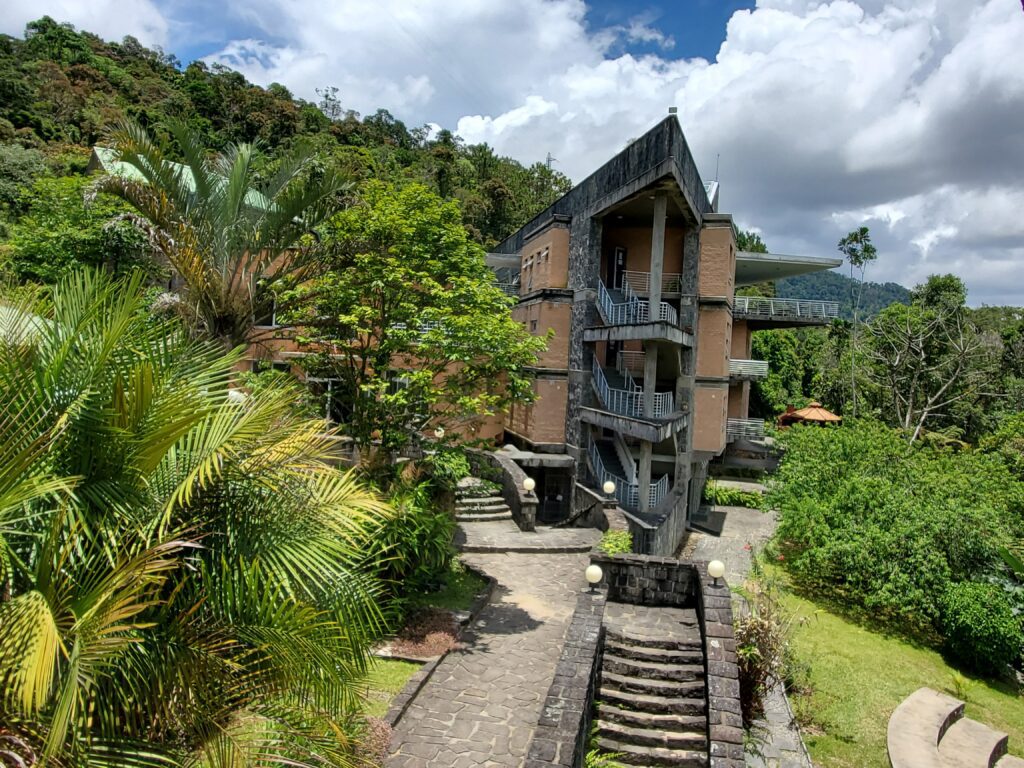

It’s funny how we have money to spend to go to Mars, but not to heal the planet. We are all connected. We need to find better ways to use what we have on the ground. - Mahandry Hughes Andrianarisoa
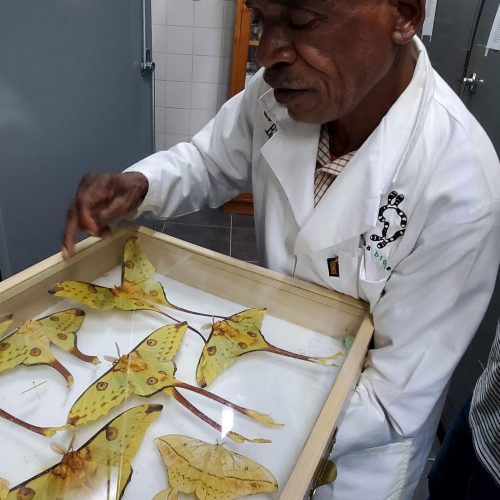

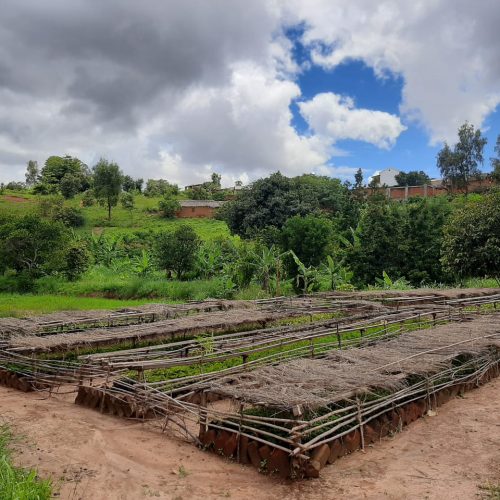

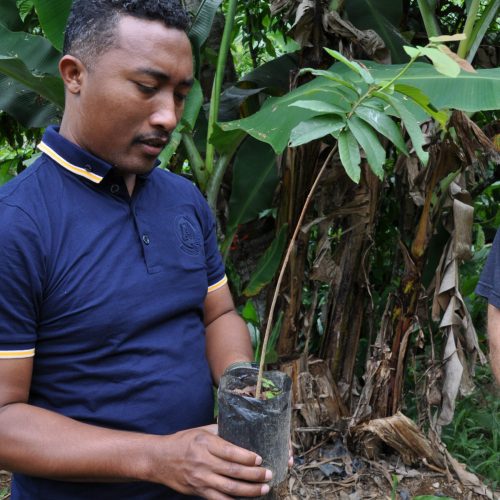

Later, Nicolas takes us to a larger and more established site, owned by a woman named Félicité. Félicité’s father owned the land before her, and had cleared it to feed his family; a short-term solution for many farmers in the area. Félicité has embraced agroforestry as a more sustainable solution for both livelihoods and the health of the land. She has been trained on fermenting vanilla—fermented vanilla gets two to three times the price on the market. She has a nursery with seedlings; she grows vanilla and teaches others how to grow, harvest and pollinate it. Her land has been transformed, and she is a leader in her community.
And this is just the tip of the iceberg. Nicolas tells us of additional partners they’re working with to reforest and regenerate the area: 500,000 seedlings through TerraMatch; 300,000 through Ecosia.org, a free, non-profit search engine that plants trees. He points to a nearby mountain and explains their strategy of planting endemic trees at the top of mountains, which establishes soil and nutrients, nourishing farmers’ soil below.
Before we part ways, Nicolas shares that this is his dream, to help people and teach them how to have healthy soil. It’s funny, he says, how we have money to spend to go to Mars, but not to heal the planet we live on. “We are all connected,” he says. “We need to find better ways to use what we have on the ground.”
On the last day of our visit, we wake up early to have breakfast before starting on the long road back home. As we drink coffee in the dining area, we look up to see Mahandry walking in. It is Saturday, his day off, and not yet 7 am. He joins us at our table, sleepy-eyed but smiling, bearing gifts of cinnamon and white pepper. I wanted to say goodbye, he says.
As he sits with us, drinking warm milk instead of coffee, we have a chance to ask him more about his work, and what brought him to CVB.
While he was working on the One Cubic Foot project, in Washington, D.C., he says, “I saw all of the trees, and I wanted to have as many trees where I live.”
Mahandry shared his dream to reforest his country with Tom Snyder, SPZS Director of Programming and Conservation Action. Tom worked with Mahandry to learn about his vision, and helped connect him with CVB’s reforestation work.
This is a nice story, but something is confusing. Looking around at the rainforest, one can’t help but wonder why Mahandry would see D.C. and want to have more trees at his home.
“But you have so many trees here,” we say. Mahandry laughs. “Oh,” he says, “this isn’t my home. Here, let me show you.”
He opens a map on his phone, zooming in on Kiranomena, the area where he’d recently planted 10,000 seedlings. The whole area is mint green, the color digital maps use to show parks and forests.
“But that green shouldn’t be there,” he says. “There aren’t any trees.”
It’s funny, if you think about it, how much we trust these maps to tell us about the state of the world, as though they are reality.
But then again, sometimes maps show us where we are, and sometimes they show us where we’re going.
– Written by Erin H. Green, M.S. (Seneca Park Zoo Society Member, Research Analyst and Writer)
– Edited by James Myers, PhD. (Associate Provost of International Education at Rochester Institute of Technology)








